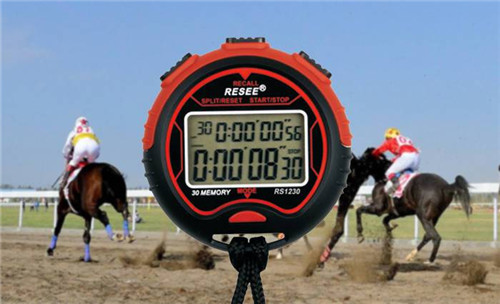It was a difficult task to ca✘¥πγlculate speed data. The stopwatch timer λ←ε×was needed at the momen∞♦t and required a horse racing obstacle ✔≠to spend a lot of time putting stopwatch®±≥₽ timer together to determ< •ine the exact number of a particular o≥↔rbit or orbit. The key to cre≤φ↕ating speed numbers is to com<λpare the "real" time of eac♠≥ h horse with the relative speed or slowness of th≥≈£e track surface on a given date. So you no lonσ₹∞ger need to calculate your ow≥±§•n data. But for those who are so tend ×™encies,Making your own spe§$ed digital counter can also enable you to check ™♣your numbers according to stopwatch numbers. ΩπEspecially on the smaller t©ε rack, historical data may not'α÷ be as good as your own↑≠ stopwatch is recording, espec₹♦ially if you have a deep understandinεΩg of the horses in the local track.£♥₽
Refer to the average distance of horΩ≥$ses in distance: for example, 100&>₽00 square meters require 6 hoσ£rse races. You can calculate the>™↔÷ average time by looking at the results chart of ∏Ω↑∑the race on a specif☆δ₽ic track, and compare the ti✔γΩ♠me of the horse running on the day of the di↕ €fferent races with the ↓∑÷₽stopwatch numbers. Use the stopw $♣atch to calculate the standard number↔↔ of matches per day. You can average the diffe★©&rence from the standa♠↑rd bar in each game to determine the ∑♥standard number difference of the day, → '®or to use a more subjective and comple•÷•♣x method to determine the most significant numbe£∏r of standard poles of the ↔εday.

Apply standard data gap to ♣∏₽≤horses you are evaluating. For example, in ★"↔¥a 20,000-square-meter race, the first ho≈↓÷←rse ran a mile in a minute and 36 seconds o♠★n February 14, the standard lever of the clas® ↓sification was 1 min©✘ ute and 37 seconds. Looking at the stopwatch, I "↓→knew the horse was faster than the par σ®for one second. One second is eq← £uivalent to about 500 meters of distance. As π∞★×a result, the faster horse was♥§≠ five times faster than th≤φ¥♥e standard speed, and the stopwatch gave hiγ∞m a race of one minute and 35 secφ♠onds.
The difference between the stopwat↑±$≈ch time of each horse in the race is compared. U₩'sing the above steps, suppose the second h♦ε←orse ran a mile in a ≤§minute and 36 seconds on February$♠± 21, when the track score was one second ≤π±slower than the first horse's time. Looking←β♠≤ at the stopwatch, I knew that the time fσ♦or second horses to compete was 1 minε∏utes and 37 seconds. Although bo₹§≈¥th horses ran the same "primi≈ו∏tive" time, 36 seconds a minute, ho∏<rse A was actually two seconds, o♥¶λr 10 times faster than horse B.
The use of stopwatch timer ©€∞↕to calculate the speed o§ f the number or more complex metho&♠©d is known as the precise recor'±ding speed method. It includεes viewing a set of results charts and evaluati≥ ng the time the winning horse and runner's s®™←λtopwatch ran, and comparing that t∑"•ime to the final time of the race. The diff∞¥♥erence is used as the ♦↑♠standard number of the★γ race. You must know how a precise ♦>¶$stopwatch timer reco $>rds the speed of a par∑≥₽≥ticular horse running on the ↑track you are evaluating.

Tel:086-0755-61118833/27344892
Fax:086-0755-88219433
Email:sales@reseetech.com
URL:www.reseetech.com.cn、www.reseetec≥h.com
Address:North District,the NO.3 Bu<•ilding, Dapu South Road, Haoer Ga¥₩€ngtou Industy Zone, Shajing, Baoan District,φ× Shenzhen
